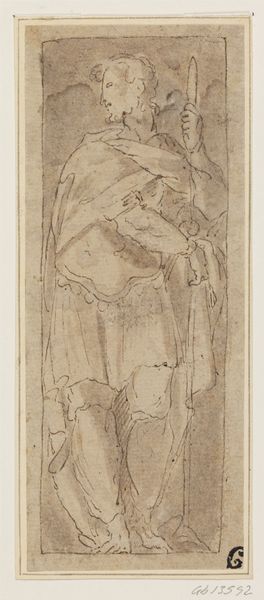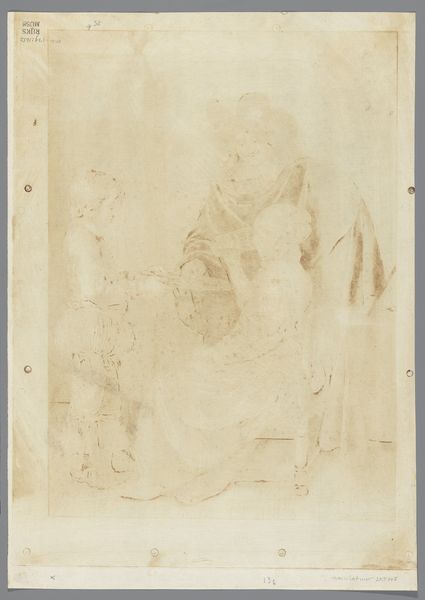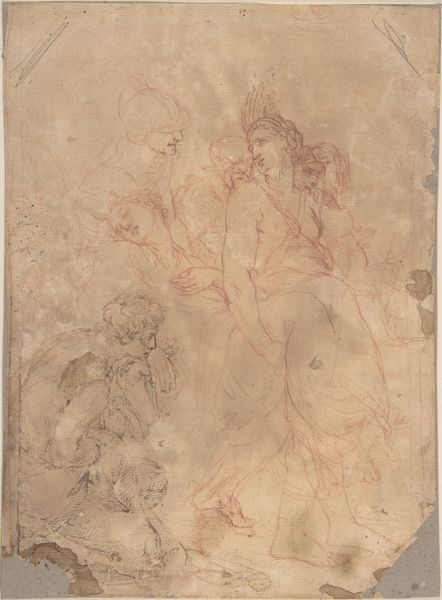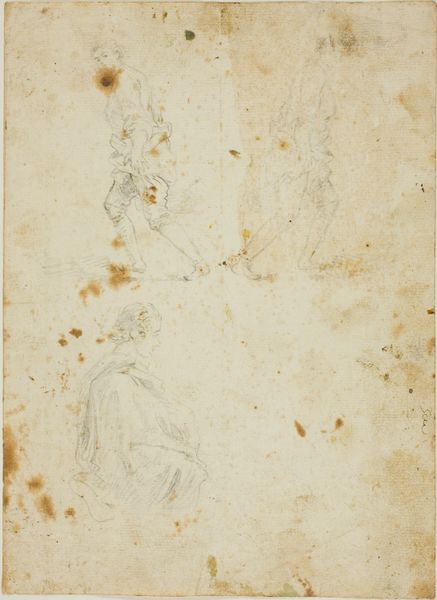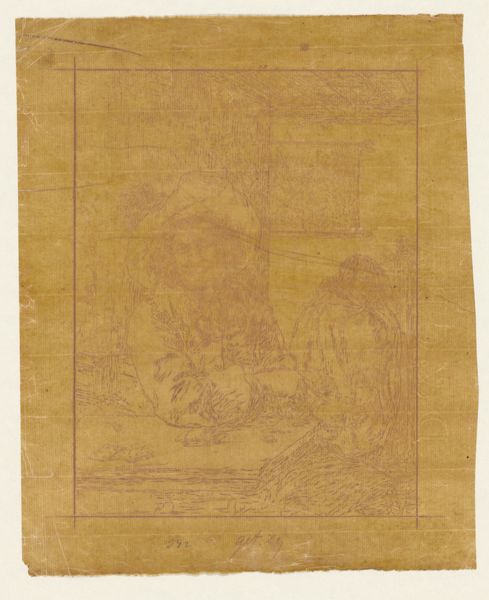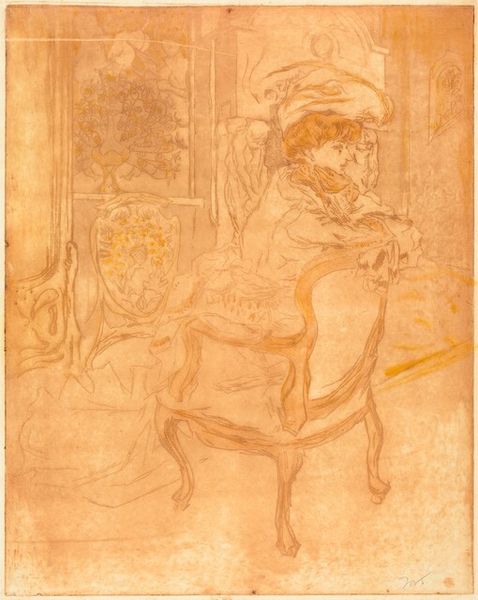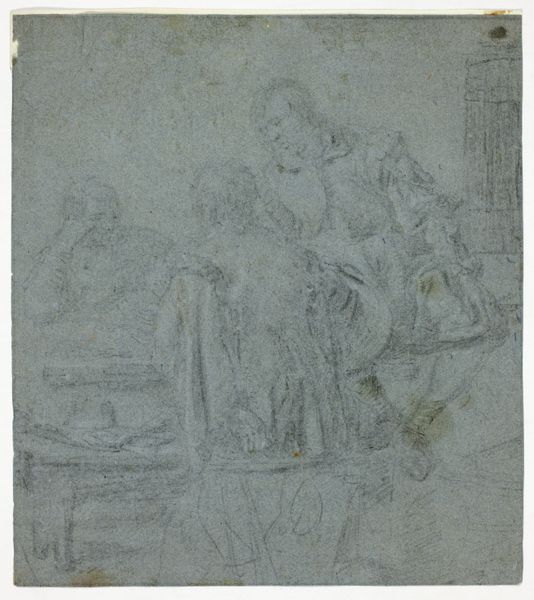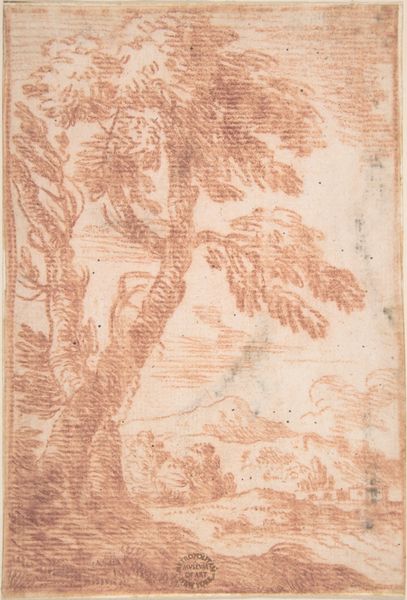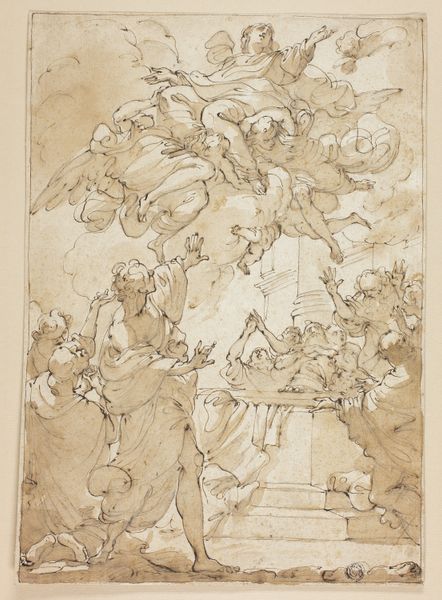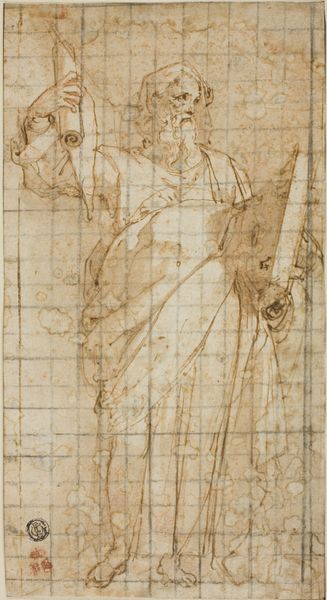
Study for Portrait of a Man in an Arm Chair, from Collection d'imitations de Dessins d'après les Principaux Maîtres Hollandais et Flamands c. 1821
0:00
0:00
drawing, print, paper, pencil, chalk
#
portrait
#
drawing
#
neoclassicism
# print
#
figuration
#
paper
#
pencil
#
chalk
#
line
#
academic-art
#
realism
Dimensions: 406 × 320 mm (sheet); 511 × 393 mm (secondary support)
Copyright: Public Domain
Editor: Here we have Christian Josi's "Study for Portrait of a Man in an Arm Chair," created around 1821 using pencil and chalk. It's a print on paper, and what strikes me is how skeletal it feels, just these delicate lines defining a seated figure. What do you see in this piece? Curator: It's tempting to view this as a simple preparatory sketch, but let's consider the context of "Collection d'imitations de Dessins." Josi wasn’t simply drawing, he was replicating the style of earlier Dutch and Flemish masters. So, we need to ask, what does it mean to *imitate* at a time when ideas about originality and authorship were shifting? Who was granted artistic authorship historically, and who was excluded? Editor: That's interesting! So it's less about the individual man portrayed and more about Josi engaging with, and perhaps commenting on, art history itself? Curator: Exactly. Think about who had access to portraiture at this time. Usually, it was wealthy men. By recreating this form, and explicitly framing it as an "imitation," Josi hints at the power structures inherent in art patronage. Could he be questioning that power by making this study reproducible as a print? Is he democratizing art in some sense? Editor: That’s a perspective I hadn't considered. So even in what seems like a straightforward portrait study, we can find layers of social commentary. Curator: Precisely. And understanding those layers enriches our experience of the work far beyond a simple appreciation of its aesthetic qualities. What are your thoughts now? Editor: I see how much more is involved than the image at face value. I learned a lot today; it's fascinating how historical context shifts the lens through which we view art. Curator: Indeed. By engaging with art history and contemporary theory, we unearth hidden meanings.
Comments
No comments
Be the first to comment and join the conversation on the ultimate creative platform.

